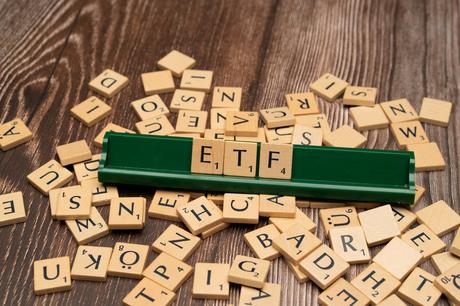
Photo by Markus Winkler on Pexels.com
" data-orig-size="1880,1254" sizes="(max-width: 1880px) 100vw, 1880px" data-image-title="the word etf on a wooden board with scrabble tiles" data-orig-file="https://smallivy.files.wordpress.com/2023/11/pexels-photo-18524062.jpeg" data-image-description="" data-image-meta="{"aperture":"0","credit":"","camera":"","caption":"","created_timestamp":"0","copyright":"","focal_length":"0","iso":"0","shutter_speed":"0","title":"","orientation":"0"}" width="1880" data-medium-file="https://smallivy.files.wordpress.com/2023/11/pexels-photo-18524062.jpeg?w=300" data-permalink="https://smallivy.com/2023/11/25/an-etf-is-a-mutual-fund/pexels-photo-18524062/" alt="" height="1254" srcset="https://smallivy.files.wordpress.com/2023/11/pexels-photo-18524062.jpeg 1880w, https://smallivy.files.wordpress.com/2023/11/pexels-photo-18524062.jpeg?w=150&h;=100 150w, https://smallivy.files.wordpress.com/2023/11/pexels-photo-18524062.jpeg?w=300&h;=200 300w, https://smallivy.files.wordpress.com/2023/11/pexels-photo-18524062.jpeg?w=768&h;=512 768w, https://smallivy.files.wordpress.com/2023/11/pexels-photo-18524062.jpeg?w=1024&h;=683 1024w" class="wp-image-23691" data-large-file="https://smallivy.files.wordpress.com/2023/11/pexels-photo-18524062.jpeg?w=723" />Photo by Markus Winkler on Pexels.comOften in the FinTwit world I’ll see people with thousands of followers declare that “ETFs are better than mutual funds,” or “You should only buy ETFs, not mutual funds.” Then hundreds of people will comment back in strong agreement. OK. But ETFs are mutual funds. They are a kind of mutual fund. Saying you should buy ETFs and not mutual funds is like saying you should buy bananas but not fruit.
Obviously some education is in order. So in this article, we’ll talk about what all of the different types of mutual funds are, including ETFs, and then when and where you can use each one.
(Note, this site contains affiliate links. As an Amazon Associate I earn from qualifying purchases. When you click on an affiliate link and buy something, The Small Investor will get a small commission for the referral. You are charged nothing extra for the purchase. This helps keep The Small Investor going and free. I don’t recommend any products I do not fully support. If you would like to help but don’t see anything you need, feel free to visit Amazon through this link and buy whatever you wish. The Small Investor will get a small commission when you do, again at no cost to you.)
What is a mutual fund?
The main way that people invest today is through mutual funds. A mutual fund is an arrangement where people send their money into a fund manager who invests for them. The manager buys a set of stocks, bonds, real estate, or other assets and maintains a portfolio (a collection of assets). The investors then get the dividends and interest the portfolio produces as well as capital gains that are made when the manager buys and sells assets in the portfolio. The manager gets a fee for managing the portfolio, plus expenses incurred by the manager and his staff get reimbursed. Often a mutual fund is run through a mutual fund company, so the fund company also gets a fee for providing the fund.
Why invest through mutual funds?
The reason many people invest through mutual funds is that it provides what is known as diversification, which is where the investor’s money is spread out over many different companies. This means that if one of the companies has a bad year or some huge scandal breaks out that destroys a company, investors only lose a small amount since only a small amount of money is invested in each company. If investors were buying stocks directly on their own, they would need to buy at least a minimal amount of each company because of the costs involved. So unless they had a whole lot of money to invest, they would not be able to spread their money out enough to get this protection. With mutual funds, they just buy shares of the fund and they are diversified.
Also, 401k plans also only allow (typically) for investors to invest through mutual funds. Most people only invest in their 401k plans, so, therefore, they invest through mutual funds.
For a whole lot more information on investing, check out The SmallIvy Books of Investing series:
This is my first book, which covers all of the details of how to invest and the risks involved in investing in different types of securities. This is the information you need to know before buying individual stocks or even mutual funds. Even more than that, it tells you what you should be doing at each stage of life to come out financially independent before you retire. Click on the book image above to learn more about it and read an exert on Amazon.
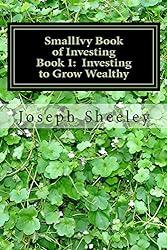
Want to learn the secrets to investing and really turbocharge your returns? Check out the second book in The Small Investor series, Investing to Win. This book presents 40 years of investing experience. Someone starting with zero knowledge of investing and the stock market could take this book and learn all that they needed to invest and do well. It would also be useful to someone who has invested and traded stocks for a while but who is really not getting the kind of returns desired.
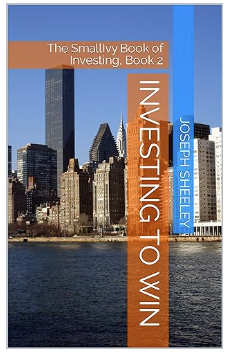
Investing to Win
Mutual fund costs
Investing through mutual funds has costs. The manager takes a fee for running the fund. Often their is a team of mangers, all making six-figure salaries for their parts. Then their are assistants, secretaries, the cleaning staff, accountants, lawyers, etc… hired by the fund company that get paid. If there is a fund company, they need to advertise and tell everyone how great their fund managers are, which costs money. And then the executives who run the fund company need to get paid. Plus there are shiny offices, trips to go to corporate meetings and “seek out opportunities,” the shiny pamphlets fund companies pass out for advertising, lunches, the company Christmas party, and so on to cover.
A substantial cost for mutual funds is also research. There can be a whole staff who pours over annual reports and searches the internet for news stories on companies. In some cases the mutual fund will pay for research from analysts that do research on companies for a living. Some fund companies may actual travel and visit companies to “get the straight information.” You’d better bet that they don’t drive their own cars and stay at a Motel 6 when they travel. All of this costs money.
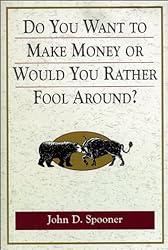
Learn to be a better investor by reading J.D. Spooner’s Do You Want to Make Money or Would You Rather Fool Around? This book made me realize that I wasn’t buying enough shares in the companies I was investing in, meaning my wins were no where near as big as they should have been.
Index Funds
One way to cut costs (but not eliminate them) is to do away with most of the research. This was done through the creation of a special kind of fund called an index fund. Some smart people did some research and found out that most managers didn’t do any better than the markets in general when investing. This was because they were managing so much money that they needed to spread it out over lots of companies. So, even if they were really good stock pickers, they needed to buy their first choice, second choice, third choice, and so on. By the time they were done, they essentially owned enough stocks to mimic the behavior of the market as a whole.
So, investors were still paying for lots of research, but managers were just buying everything anyway. Because the managers had to pay for all of that research and other costs, when they had the same performance as the markets, their returns were less than the markets once fees were deducted! So, people like Jeff Bogle (who founded Vanguard) asked, “Why do all of this research? Why not just buy the markets and save the research money? The lower you get your costs, the better the return the mutual fund buyers will see.”
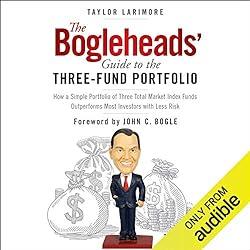
Want diversification without a lot of work? Check out The Bogleheads’ Guide to the Three Fund Portfolio. Learn to build a diversified portfolio of index funds with just three funds.
To “buy the markets,” funds started replicating the holdings of indexes. An index is a defined collection of stocks (or bonds, etc…) that are tracked to determine what certain areas of the market are doing. For example, the Dow Jones Industrial Average was developed to determine the state of large US industrial companies by picking the largest industrial companies of the day, assuming you bought a portfolio of them, and then seeing where the portfolio value went. If the portfolio value went up, you knew that large US industrial stocks were doing well. If you invested in those types of companies, you could then compare your performance with how the portfolio, the index, was doing to see if you were doing better or worse than the average company,
These new funds, called index funds, simply went out and bought the companies that comprised the different indices. The only research was to find out which companies were in a given index and buy shares of the companies in it in the same ratios as the index. This required very little time, especially since the indices change their composition very rarely. Because index fund investors were paying less in costs, and because the indexes had basically the same performance as the average managed fund with all of the research and overhead costs, index funds provided higher returns for shareholders. This made them very popular and Vanguard a mutual fund behemoth.
ETFs and Index Funds
So, index funds performed as well as managed funds and cost less. But was there a way to cut costs even further? Yes, there was. In came closed-end funds and a special kind of closed-end fund called an Exchange Traded Fund or “ETF.”
One issue with mutual funds is that when money is sent into the fund, the fund manager immediately needs to invest it. Likewise, when investors want to take their money out, they request the money back and then the fund manager needs to go and sell shares of stock to raise the cash to send to them. Every time the manager trades stocks there are costs. Plus, people tend to send in money when the markets are hot, exactly the wrong time to buy stocks, and sell when there is a big drop, exactly the wrong time to sell. Managers were forced to buy at the wrong time and sell at the wrong time, which hurt their performance, even in index funds.
The wealthiest people read a lot of non-fiction books. Don’t have time to read books because of your long commute? Listen to your books in stead with Audible. Free trial at the link below.

To deal with this issue, closed-ended funds were created. Here, a fund manager would raise a bunch of money to invest and go out and buy a big portfolio of stocks. Then, instead of having people send in money to invest, the manager would sell shares in the fund, where each share owned a portion of the portfolio. People would then trade these shares of the fund rather than sending in money to be invested directly by the fund manager. The holders of the shares could still get dividends from the portfolio and capital gains, but if they bought or sold shares it would have no effect on the investments in the portfolio. This meant much lower costs for the fund and an elimination of the bad market timing brought on by buys and redemptions.
An ETF is a special kind of closed-end mutual fund where an arrangement is made with certain large institutions to buy or sell large blocks of the fund shares called “creation units.” This is done to prevent an issue seen with traditional closed-end mutual funds where the price of the fund shares can be substantially greater or less than the value of the portfolio. Essentially when the price of an ETF gets substantially above the value of the stocks in the portfolio, someone goes out and buys the stocks in the index in a huge amount (hundreds of thousands of dollars) and sells them to the ETF in exchange for new shares in the ETF.
If the value of the shares falls well below the portfolio value, someone gets paid for a large block of ETF shares by the ETF and goes out and sells shares in the companies that make up the index. In this way, new shares of the ETF are created or destroyed as needed based on demand for them. the size of the portfolio therefore grows and shrinks!
When to Use ETFs
Because they trade like stocks on an exchange, ETFs can be bought through a standard brokerage account. Like buying a stock, you may pay commissions each time you buy or sell. (Some fund companies will let you buy their ETFs for “free,” but realize they need to make their money somewhere, so you’re paying for this trading somehow.) ETFs have lower costs than index funds because they eliminate most of the trading costs and bad timing caused by people sending in and asking for their money back from a standard index fund (usually at a bad time.)
So, most of the time it is better to buy an ETF instead of an index fund, particularly if you’re planning to buy it and hold for a long period of time, such that trading costs will be minimal.
Exceptions would be:
- There is no ETF for a segment of the market you want to invest in.
- You want to be able to send in odd amounts of money and invest it all at the same time, rather than needing to buy in equal share increments.
- You’re buying in a 401k plan or other plan that doesn’t have the ETFs available.
Otherwise, ETFs are generally the better choice. Of course, every person is unique, so while articles like this are useful for understanding how to invest and learning about the different investment options, doing research on your own or finding a good financial advisor is always a wise thing to do.
Have a burning investing question you’d like answered? Please send to [email protected] or leave in a comment.
Follow on Twitter to get news about new articles. @SmalllIvy
Disclaimer: This blog is not meant to give financial planning or tax advice. It gives general information on investment strategy, picking stocks, and generally managing money to build wealth. It is not a solicitation to buy or sell stocks or any security. Financial planning advice should be sought from a certified financial planner, which the author is not. Tax advice should be sought from a CPA. All investments involve risk and the reader as urged to consider risks carefully and seek the advice of experts if needed before investing.
